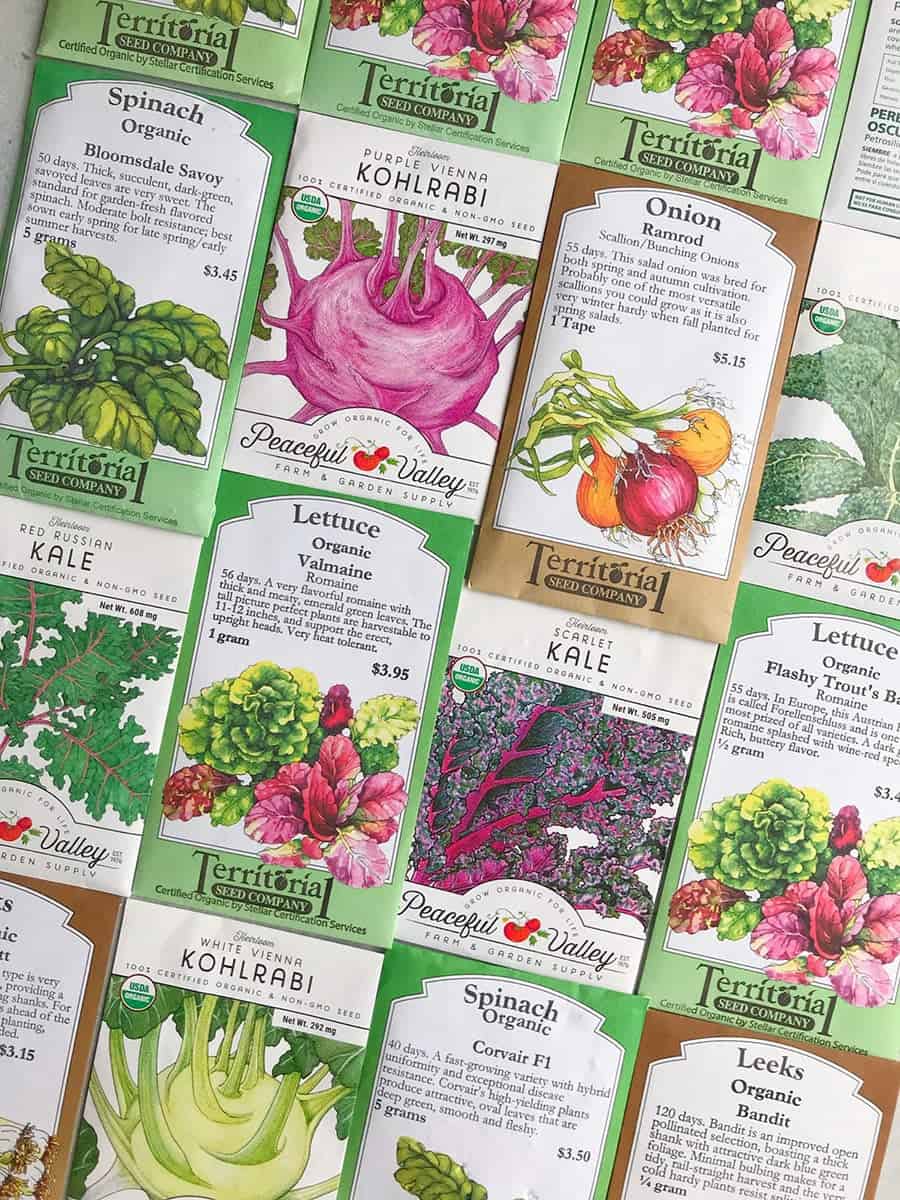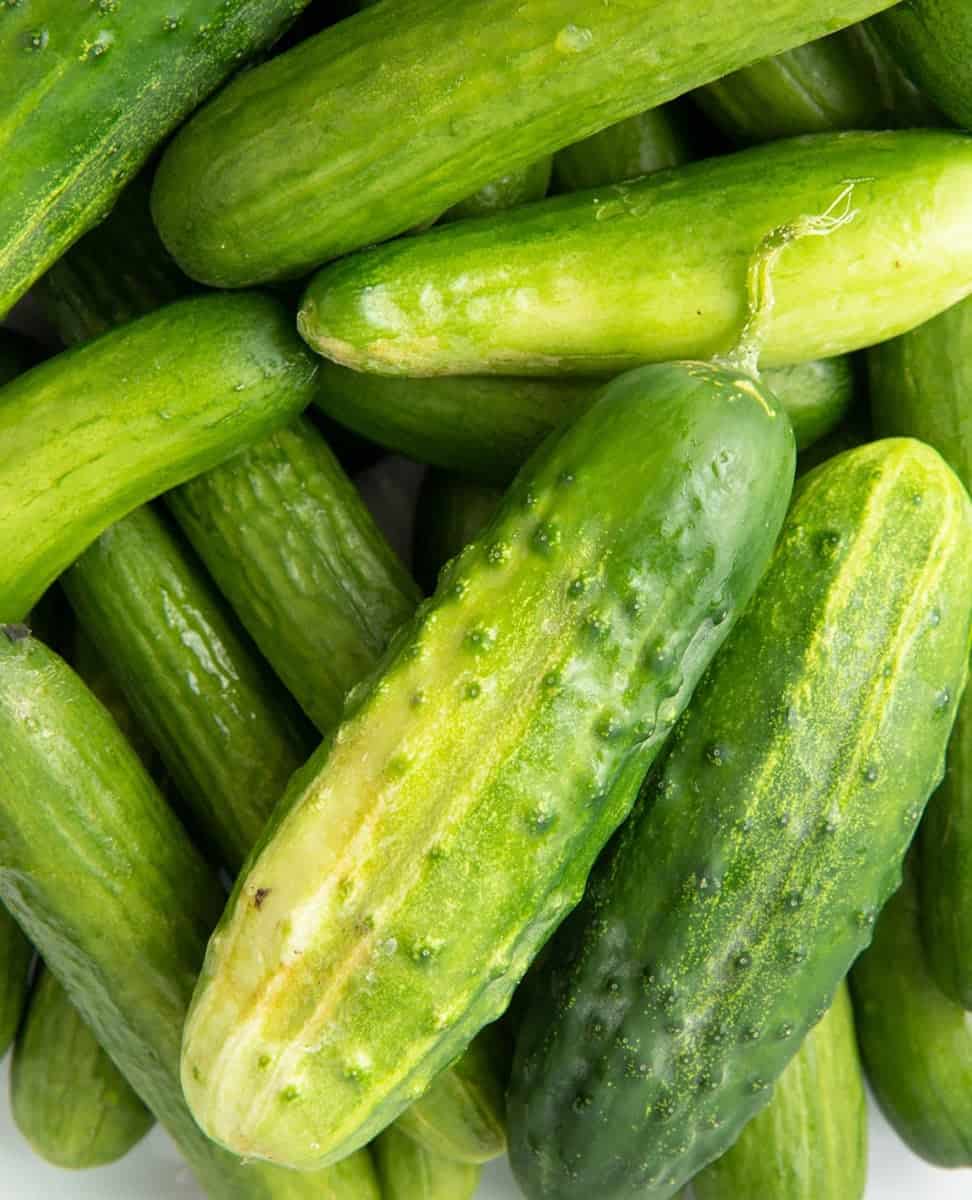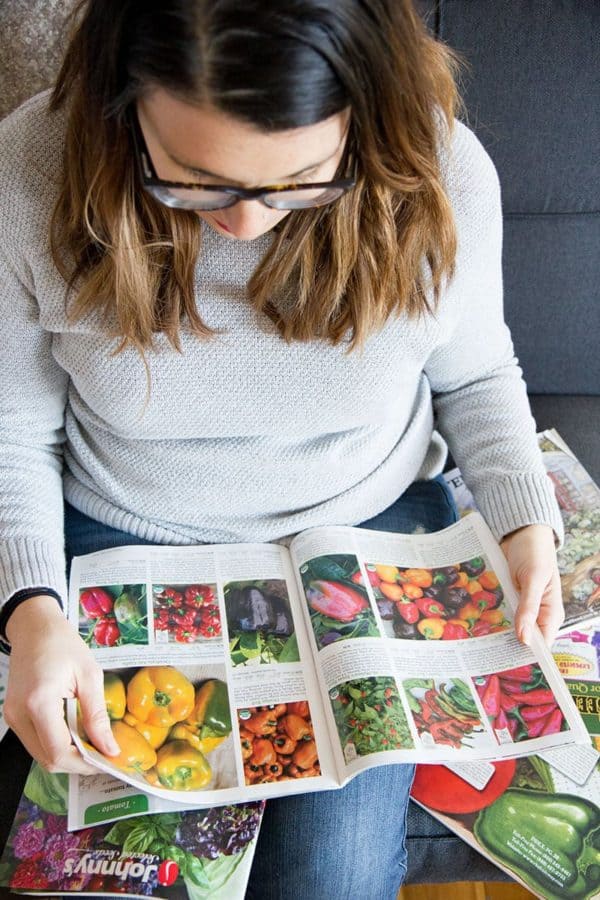So you’ve done all the hard work with planning your garden—you’ve figured out the right spot, you’ve prepped your beds and soil, and now you’re ready to actually start growing something! This is, without a doubt, one of the most fun parts of organic vegetable gardening (second only to actually harvesting and eating what you grow).
If you choose to buy seedlings, you’ll be limited to what the garden center or nursery chooses to offer—but even then, there is a lot to wrap your brain around on those shelves. And if you start your own seedlings, phew—your possibilities expand exponentially! Let me give you some pointers to narrow it all down.

Grow What You’ll Eat
It sounds so simple, but grow what you and your family will eat!
Trust me, when you get to the plant section of the store or start flipping through seed catalogs, you’ll be tempted to grow some pretty eggplant even though no one in your family even likes eggplant. It is easy to get carried away by the photos and descriptions of all the new-to-you varieties and plants!
But be realistic with yourself and stick to what you know you and your family will eat. If nobody likes radishes, then it doesn’t make sense to grow a whole bed of colorful radishes, no matter how pretty they may be. Stick with the foods that everyone in your family loves.

This is a great time to try new varieties of old favorites that you can’t find in the grocery store, though—if you love cucumbers, maybe you want to try something like Mexican Sour Gherkins (AKA: cucamelons). Definitely experiment, but make sure to do it with vegetables you know your family will eat.

Keep In Mind How MUCH You’ll Eat
Lettuce is easy to grow, but it doesn’t store well, so you don’t want to overplant it. Zucchini plants are notorious for producing vast amounts of fruit, but a single cucumber plant can also provide a surprising amount of food.

Really think through how much of each plant your family might eat. We used to grow a ton of beets because, well, they’re easy to grow and that’s what you do! But I eventually realized we don’t actually love beets all that often. So now I grow enough for one or two meals each year (plus a few extra to give away to friends), and leave the rest of my growing space available for plants we really enjoy.

Get the Most Bang for Your Garden Space
If you have a giant garden area, great! Go hog-wild with choosing what to grow. But if you’re a little more limited on space, stick with veggies and herbs that grow quickly or are “pick and come again.”
For example, broccoli is delicious, but it takes literally months to grow a single head of it—that’s a long time to have a chunk of your beds reserved for a meal’s worth of payoff!

On the flip side, a single tomato plant can grow months’ worth of fruit, depending on the variety. Herbs like basil thrive and grow more the more you pick them. And there are some varieties of radish that are ready to go in just a few weeks, so you can keep harvesting and planting more all through the season.
Ask Around
Gardens are microclimates—as crazy as it sounds, what grows in my garden may or may not succeed in a garden 10 miles down the road. Now is the time to talk to the locals! I’ve found that locally-owned hardware stores are a great place to ask people “what grows well here?” You might be lucky to stumble upon an old-timer who’s been growing the same variety of corn for 50 years! That information is priceless.
Also make sure to check in with your neighbors—you never know what kind of gardening experiments are happening in people’s backyards. Gather information from the people nearest to you.

No matter what you chose to grow, remember that one of the wonderful things about gardening is that you get a new shot at it each year! You can try different varieties, different veggies, and different amounts. It’s never set in stone—so feel free to experiment from year to year to figure out what works best for you, your garden, and your family.








Hi Cassie,nice to meet you. I’m about to try “farming pawpaw” for commercial purpose. I dont really know the diff between gardening and farming. Please advice me and direct me where to get hybrid seeds for a hectare of land.
Thanks
Hi Esther, I’m sorry, but we don’t have experience with growing pawpaws, so we aren’t going to be the best source for guidance on this. Best of luck!